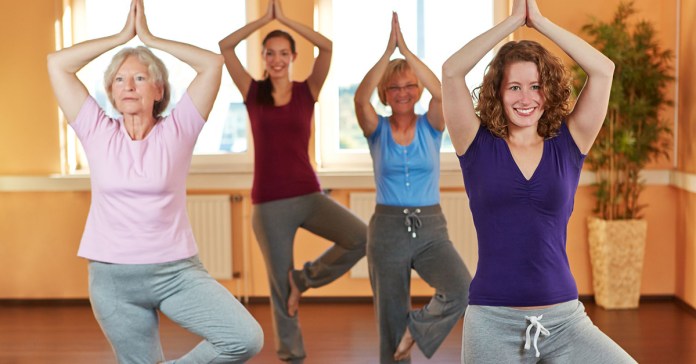Anusara yoga was started by an American yoga teacher, John Friend, in 1997. Friend combined the spirituality of traditional yoga with the health-oriented contemporary versions of it.
Yoga focuses on both mind and body. One branch of yoga is hatha yoga that focuses more on the body than the mind. Anusara yoga is a self-improvement version of hatha yoga. It is designed to empower an innate goodness in a person while also catering to their fitness and physical needs. It is fitness with soul.
The Basis Of Anusara Yoga
Anusara yoga is structured on 3 A’s – attitude, alignment, and action. These determine the purpose and form of each pose in Anusara yoga. Try not getting too intimidated by these principles. Anusara yoga is actually very upbeat and playful.
1. Attitude: It’s All Heart

The basic philosophy of Anusara yoga is that everything and everyone is unified by one divine energy. Because divine energy is all pure and good, it believes there is an innate goodness within and outside all beings. Instead of trying to fix a person, it focuses on all that is right with a person. It, thus, helps improve self-image and is quite a confidence builder.
While each Anusara yoga asana has benefits for your muscles and bones, what’s unique is that it is driven by heart. The instructions given during an Anusara yoga class are backed by this central heart theme. It helps you reconnect with the Supreme Spirit residing within yourself.
Each yoga session begins with “Om” chants and a prayer to the Hindu god, Lord Shiva.
2. Alignment: The 5 Universal Principles of Alignment

The 5 universal principles of alignment are biomechanical principles that are applied to each yoga pose. They are centered on physicality and determine how each posture should be performed. This is also what enables the therapeutic aspect of Anusara yoga. The principles are:
- Opening To Grace: You need to first become aware of the Supreme Spirit within yourself. This is when you adopt an open-minded, free-spirited attitude for the asanas to follow.
- Muscular Energy: You then need to activate the energy circuits within you body. You channel energy from the outer surface of your body to internal focus points.
- Inner Spiral: This is when you send energy waves through your body through different yoga postures. You need to create an expanding energy spiral that works up your legs toward your waist and down your arms toward your forearms.
- Outer Spiral: As all yoga asanas need to be reversed back to a resting state, same is the case with Anusara asanas. You need to continue to send energy waves through your body but now in the opposite direction and opposite effect. You need to create a contracting energy spiral that starts in your waist and moves downward through your legs and in your arms toward your upper arms.
- Organic Energy: Sealing off the entire transcendental experience, you are required to channel energy from the focal points inside your body back to your outer surface.
3. Action: Energy Loops And Focal Points

Action in Anusara yoga refers to the general energy circuits within the body. Getting in tune with these circuits can help enhance your physical and mental well-being. Let’s take a look at what these are.
- The 7 Energy Loops
Energy loops help rectify each asana to ensure a natural flow of energy through the body. There is a left and right component of each of the 7 energy loops: ankle loop, shin loop, thigh loop, pelvic loop, kidney loop, shoulder loop, and skull loop.
- The 3 Focal Points
Every pose shifts your body’s weight. Depending on where the weight is shifted, the focal point closest to that part will be activated. These are the 3 focal points stimulated in Anusara yoga:
- Pelvic Focal Point: This is at the core of the pelvis.
- Heart Focal Point: This is at the bottom of the heart.
- Upper Palate Focal Point: This is on the roof of the mouth.
The difference between Anusara yoga and other forms is that it is not mandatory to include meditation, breathing exercises, bandhas (muscle holds), and mudras. If yoga instructors wish to incorporate these into Anusara yoga sessions, they may do so. Each yoga session usually ends with savasana (corpse pose) and/or meditation.
Anusara yoga helps you feel better about yourself by revealing an inherent divine quality you may have not acknowledged before.





